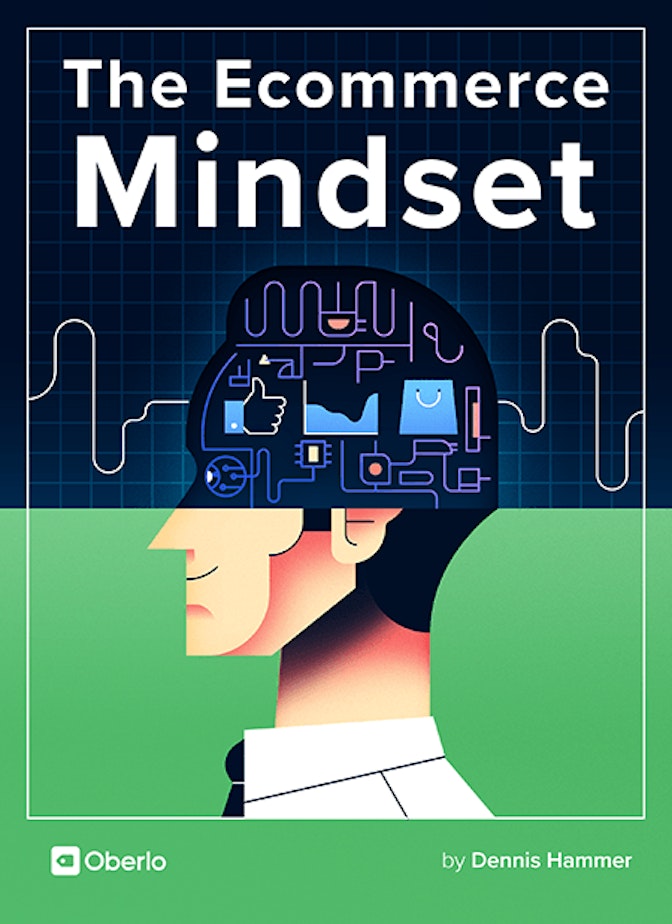So far, we talked a lot about building relationships. If you want to compete with giants like Amazon and other major retailers, you must build a following of fans who make repeat purchases and tell their friends about your store.
Ideally, you want your customers to come straight to your store whenever they need a product you sell. You don’t want them to start their research process over again, and you definitely don’t want them to make their way to Amazon (which is especially skilled at customer retention).
Therefore, your relationship with your customers is your most valuable asset.
Today’s sale isn’t nearly as important as the connection you build with your customers and fans. So, instead of focusing on what you can make off your customer today, worry about the lifetime value your customer can provide.



Customer Lifetime Value Explained
Customer lifetime value (CLV) is the amount of money you can earn off one customer throughout their lifecycle. If you calculate it properly, you can figure out how much each customer spends over their entire relationship with your store, but more importantly, you can find out how to optimize their experience to get the most out of your investment.
Put another way, “Customer Lifetime Value is a prediction of all the value a business will derive from their entire relationship with a customer.”
→ Click Here to Launch Your Online Business with Shopify
CLV is an easy metric to calculate, but many businesses never bother.
The formula is quite simple:
CLV = [(Average Order Value X Average Number of Sales in Their Lifetime) – Customer Acquisition Cost] / Average Profit Margin
Average order value is easy to calculate. Simply add all your sales together and divide by your number of customers. Next, multiply that number by the average number of times a customer makes a purchase. Then, subtract the cost of acquiring that customer. (Maybe you advertise with banner ads or buy Facebook ads). Finally, multiply the total number with your profit margin. Now you have your CLV.
Here’s an example:
- Average order value = $90
- Average number of sales per customer = 3
- Customer acquisition cost = $6
- Average profit margin = 20%
Therefore, your CLV = [($90 x 3) – 6] X 0.2 = $52.80 per customer.
It’s important to understand how those four variables interact, because you can grow your CLV by leaning on each one. Think of them as your growth levers.
For instance, you could…
- Increase the average order value by upselling more products
- Increase the number of times customers order by bringing them back to your store through retargeting or email marketing.
- Reduce your customer acquisition cost by investing in organic marketing methods.
- Increase your profit margin by negotiating better deals with your supplier (or switching to a supplier willing to provide a better deal).
Customer Lifetime Value Unlocks an Important Secret
“For managers and marketers alike, the power to calculate what customers might be worth is alluring,” says Michael Schrage, a research fellow at MIT Sloan School’s Center for Digital Business. “That’s what makes customer lifetime value so popular in so many industries. CLV brings both quantitative rigor and long-term perspective to customer acquisition and relationships.”
It’s great to know your CLV, but this number doesn’t tell the whole story. So use your CLV metric to gather even more information about your customers.
Here’s an important secret every ecommerce store needs to realize: Not all customers are created equal.
Some are substantially more valuable to your business than others. It’s your job to identify which customers will spend the most at your store over their lifecycle and to find ways to keep them coming back.
Earlier in this book we talked about constructing buyer personas–caricatures of your ideal customers. Rather than calculating a single CLV for all your customers, it’s smarter to calculate it for each customer segment. This allows you to create copy, images, and offers that appeal to each of your specific target customer groups.
So say you have two customer segments: Dan and Phillip.
Dan is a gift giver who only buys your products for gifts about once a year during the holiday season. It’s worth your time to speak to him during the holidays, but he’s unlikely to buy from your store more than once. (In fact, he probably won’t even remember your brand name a few days after the holidays are over.)
Phillip, however, is a collector who regularly purchases your products for himself. He might be part of a niche community that loves your stuff. He buys your products because he wants them, not because he needs them.
In this example, the CLV of customers like Dan is small. You could take steps to increase his number of purchases, but it would take a lot of energy and money to make that happen. Since he’s not inclined to buy again, it’s probably not worth your time.
On the other hand, the CLV of customers like Phillip is worth expanding. He wants to buy more products from you. He just needs a reason. It wouldn’t take much effort to convince him to buy more expensive products–and to buy them more often. Besides, each of his subsequent purchases come in without incurring a customer acquisition cost.



Cultivating a Relationship
How do you cultivate a long-term relationship to raise a customer’s lifetime value?
Building a relationship essentially boils down to…
- Meeting your customers’ needs. Give them the products they’re looking for. Satisfy their wants and solve their problems.
- Creating a pleasant experience. Buying from you should be personable, fast, and simple.
- Giving them opportunities to reconnect. Make yourself visible in their life through email and social media, and make contacting you effortless.
- Incentivize them to return. Develop a loyalty program, hand out discounts, send them exclusive customer-only promotions, or whatever else you can think of it make it more economical to come to you over other stores.

